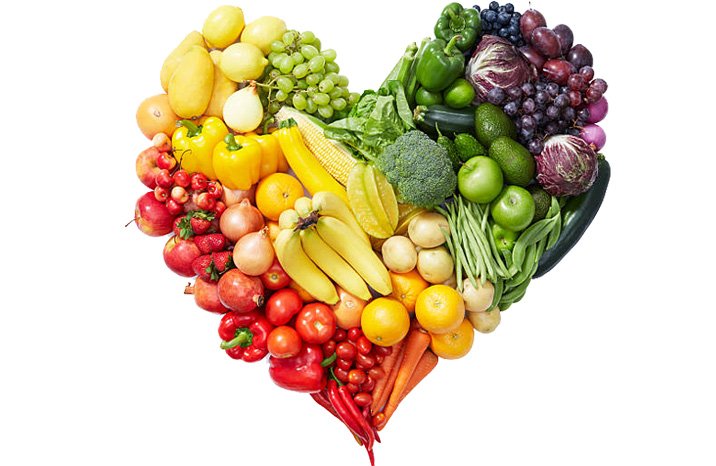

September Food Theme
The theme for September is “Falling” into Healthy Habits
National Whole Grain Month
Any food made from wheat, rice, oats, cornmeal, barley, or another cereal grain is a grain product. Examples include bread, pasta, breakfast cereals, grits, and tortillas. Popcorn, rice, and oatmeal are also considered grain products, but not all grains are created equal.

Whole grains, which contain the entire grain kernel (bran, germ, and endosperm) provide many health benefits and have been proven to reduce the risks of chronic diseases. They provide many nutrients vital for good health, like fiber, B vitamins, and minerals. Examples of whole grains include whole wheat flour, bulgur (cracked wheat), oatmeal, whole grain cornmeal, and brown rice.Choose whole grains for a healthier and more nutritious option.
Refined grains are not as healthy because the bran and germ have been removed. The only part of the grain kernel that is left in a refined grain is the endosperm. Although refined grains may be enriched with nutrients like iron, folate, and vitamins, these grains are considered nutrient-poor and a source of empty calories.
Looking for ways to add more whole grains in your menus?
- Visit the ICN Child Nutrition Recipe Box (CNRB) and enter the search words “whole grain.” There are several pages of CACFP recipes for whole grain items.
- Check out ICN’s whole grain resource Incorporating More Whole Grain Foods Care Connection Fact-Sheet.
Books About Grains
- One Grain of Rice: A Mathematical Folktale by Demi
- Little Red Hen and the Grains of Wheat by Leigh Ann Hill
- Bread, Bread, Bread (Foods of the World) by Ann Morris
- Pancakes, Pancakes! By Eric Carle
National Food Bank Day – September 3rd

National Food Bank Day is recognized on the first Friday in September to bring awareness to the continuing problem of hunger in our world-wide community. According to Feeding America, more than 42 million U.S. citizens (1 in 8), including 13 million children (1 in 6), live in homes with food insecurity, meaning they lack access to food for an active and healthy life. Food banks are available to help many people who struggle with providing food for themselves and their families.
Consider hosting a food drive to support your community. Recognize your local food bank not just on National Food Bank Day but on a regular basis, such as once every quarter or around specific holidays. Join forces with FeedingAmerica.org and Food Research and Action Center (FRAC) to help end food insecurity and childhood hunger and to learn more ways to help.
Books About Food Insecurity
- Maddi’s Fridge by Lois Brandt
- Uncle Willie and the Soup Kitchen by Dyanne Disalvo-Ryan
- Tight Times by Barbara Shook Hazen
- The Good Garden: How One Family Went from Hunger to Having Enough by Katie Smith Milway
- Mama Miti by Donna Jo Napoli
- Faith the Cow by Susan Bame Hoover
- Katie’s Cabbage by Katie Stagliano
- One Hen by Katie Smith Milway
- The Lunch Thief by Anne C Bromley
- Poverty and Hunger by Louise Spilsbury
Conversation starters about hunger for children:
- What are some reasons that people may not have the food they need?
- Describe how you feel when you are hungry.
- How could you help those who are in need of food?
National Cheese Pizza Day – September 5th

A classic menu item loved by many is the cheese pizza. The origin of pizza is unknown, but many date it back to ancient Greece when bread was covered with oils, herbs, and cheese. The flatbread pizza that is well-known today was first developed in Naples, Italy. Little Italy in New York featured the first pizza establishment in the Western world in 1905. Pizza has become an American classic, with 3 billion pizzas sold every year. The average American eats 46 slices each year, with 93% of Americans eating at least one slice in the next 30 days!
Celebrate this day by offering cheese pizza on your menu. Children can build their own using English muffins, bagels, or ciabatta bread for the crust, or try USDA’s Cheese Pizza recipe.
Try a new cheese like provolone, Romano, and parmesan along with mozzarella to explore different flavors. Cheese is an excellent source of protein, fats, and minerals, which makes it perfect to “fall into healthy habits.” To credit pizza, pizza crust, vegetable toppings, or tomato sauce, refer to the Crediting Handbook for the CACFP or contact your State agency.
National Cooking Day – September 25th

National Cooking Day is a perfect opportunity to get children involved in the kitchen! It is an excellent way for children to express creativity while being introduced to new food throughout the process. Invite a local chef to talk with the children about cooking, host a kid-friendly food demonstration in the classroom, or provide activities for families to do together at home. Check out the National CACFP Forum’s CACFP Kids in the Kitchen for more developmentally appropriate and fun ways to extend nutrition education.
More Suggested Books for Children This Month
- The Boy Who Wanted to Cook by Gloria Whelan
- Stone Soup by Jon J Muth
- Eating the Alphabet by Lois Ehlert
- Planting a Rainbow by Lois Ehlert
- The Vegetables We Eat by Gail Gibbons
What’s in Season in September?
Get these yummy fruits and vegetables while the summer harvest is still thriving! Depending on where you live, you may be able to find them at local gardens, farmer’s markets, and grocery stores.
There are so many ways to use these in-season fruits and vegetables. To get recipes with meal pattern credits, use the Child Nutrition Recipe Box, click on “Explore Recipes,” browse for your specific program and type the fruit or vegetable name in the keyword search. For example, search “beets” in CACFP child care centers, and this Local Harvest Bake recipe comes up, which credits ½ cup vegetable for ½ cup served.
The in-season fruits and vegetables are a sure way to ‘try for five” and “fall into healthy habits.”
• Acorn squash
• Apples
• Beets
• Butternut squash
• Cantaloupe
• Cauliflower
• Eggplant
• Figs
• Grapes
• Green beans
• Lettuce
• Mangoes
• Mushrooms
• Okra
• Peppers
• Persimmons
• Pomegranates
• Pumpkins
• Spinach
• Sweet potatoes
• Swiss chard
• Tomatoes

September is a great month to incorporate a variety of apples in the menu. Depending on where you live, apples are harvested in September. Apples are rich in fiber and full of vitamins and minerals, such as vitamin C. Vitamin C is important for our immune system and protects us from sickness, proving that an “apple a day can keep the doctor away.”
There are many ways to incorporate apples into menus, activities, and discussions this month (and even into the fall season).
- Apple Stamp Art
- You will need paper (or a paper plate), finger paint and a couple of apples.
- Cut apples in half. Have children dip the apple half in paint and then stamp on the paper.
- Before painting, discuss the parts of the apple (stem, skin, core, and seeds).
- Apple Recipe: USDA’s Baked Apples and Batatas
- The batata dulce or sweet potato is a root vegetable native to Central and South America, Mexico, and the West Indies. This combination of apples and batatas dulces creates a sweet and savory dish enjoyed by both kids and adults.
- Apple Orchard Visit
- Most children enjoy a chance to pick their own apples with a visit to an orchard. There are so many varieties and colors of apples. Apples picked and eaten right off the tree are a great experience. Ask children do they like to eat apples, and if so, what’s their favorite way to eat it: sliced, diced, baked, dipped, or eaten whole?
Fun Facts for Kids About Apples
- There are more than 2,500 varieties of apples grown in the United States.
- The largest apple ever picked weighed 3 pounds 2 ounces.
- Apple trees can live to be about 100 years old.

October Theme Days
• National Pasta Month
• National Pizza Month
• Vegetarian Month
• 10/1: World Vegetarian Day
• 10/4: National Taco Day
• 10/12: National Farmers Day
• 10/15: National Mushroom Day
• 10/21: National Apple Day
• 10/22: National Nut Day
• 10/25: World Pasta Day
• 10/26: National Pumpkin Day
References
Apple Holler. (2018). Apple fun facts. https://www.appleholler.com/orchard-farm/all-about-apples/apple-fun-facts/
Culinary Nutrition Associates. (2021). Cheese pizza USDA. https://healthyschoolrecipes.com/recipes/cheese-pizza-usda/
Feeding America. (2021, March). The impact of the Coronavirus on food insecurity. https://www.feedingamerica.org/sites/default/files/2021-03/National%20Projections%20Brief_3.9.2021_0.pdf
Food Research & Action Center. (2021). Working to end hunger in America. https://frac.org/
Institute of Child Nutrition, Child Nutrition Recipe Box. (2021). Baked batatas and apples – USDA recipe for child care centers. https://theicn.org/cnrb/recipes-for-centers-main-dishes/baked-batatas-and-apples-usda-recipe-for-cacfp-multicultural/
National CACFP Forum. (n.d.). CACFP kids in the kitchen. http://www.cacfpforum.com/cacfp-kids-in-the-kitchen.html
University of Nebraska—Lincoln. (2021). Institute of Agriculture and Natural Resources UNL Food. https://food.unl.edu/
U.S. Department of Agriculture, Food and Nutrition Service. (2021). Crediting handbook for the Child and Adult Care Food Program. https://www.fns.usda.gov/tn/crediting-handbook-child-and-adult-care-food-program
U.S. Department of Agriculture, MyPlate. (2021). MyPlate kitchen. https://www.myplate.gov/myplate-kitchen
U.S. Department of Agriculture, Snap-Ed Connection. (n.d.). When are apples in season?. https://snaped.fns.usda.gov/seasonal-produce-guide/apples
U.S. Food and Drug Administration. (2020, April 1). CFR – code of federal regulations title 21—food and drugs chapter I—food and drug administration department of health and human services subchapter b – food for human consumption. https://www.accessdata.fda.gov/scripts/cdrh/cfdocs/cfcfr/CFRSearch.cfm?fr=137.165
Washington Apple Commission. (2021). Apple varieties. https://bestapples.com/varieties-information/varieties/
About Mealtime Memo
Mealtime Memo (MTM) is focused on nutrition and wellness in child care settings and is specifically intended for use by child care professionals who participate in the Child and Adult Care Food Program (CACFP). The objective is to provide research-based best practices for planning, preparing, and/or serving nutritious, safe, and child-friendly meals in child care settings operating the CACFP.
Beginning in January 2021, the MTM moved to an electronic, blog-style newsletter. To ensure you automatically receive the latest issue, click here to subscribe!
Please note: To ensure MTMs provide the most accurate, up-to-date information, any references to Federal regulations, nutritional standards, and other best practices are considered current at the time of publication. Please be advised that this information is NOT updated to reflect any changes/revisions beyond the publication date. In addition, all MTMs published prior to 2017 have been archived and are no longer available on our website. If you need access to an archived MTM or for questions on the latest regulations and standards, please contact ICN’s Help Desk at helpdesk@theicn.org or 1-800-321-3054.










